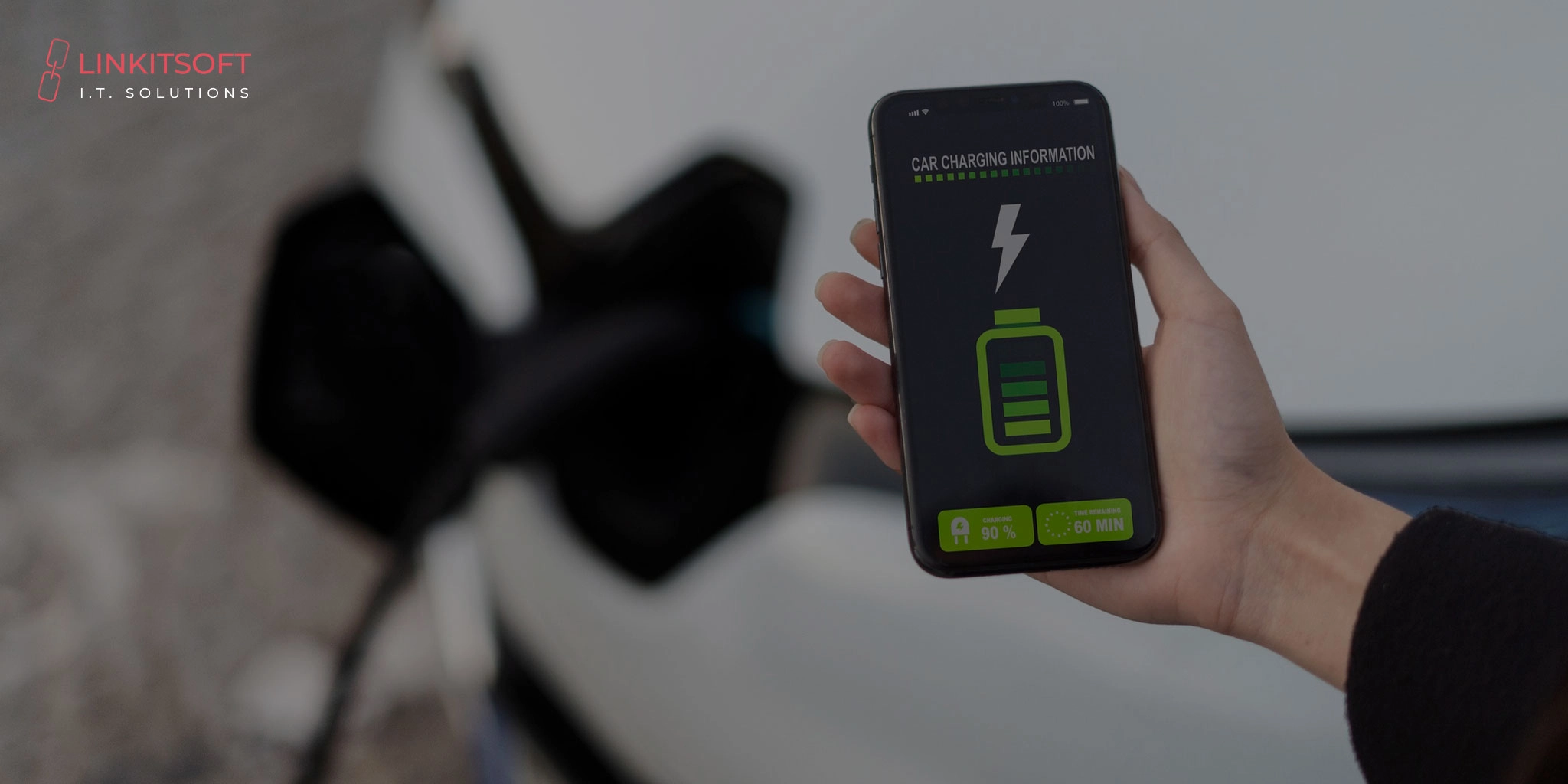We got electric cars before GTA 6, and they are already taking over our roads. We may not have flying cars yet, but charging them is already a big deal. From highways in the United States to apartment complexes in India, EV chargers are everywhere.
Automakers such as Tesla, Hyundai, and BYD are investing heavily in electric vehicles. Governments in Europe and Asia are building large public charging networks. Public chargers have doubled since 2022, and now there are over 5 million around the world. Every single one of these chargers needs a reliable app to help drivers locate it, start charging, and make payments easily.
Investors are taking notice, and startups that once created simple charging maps are now building complete digital ecosystems that connect drivers, chargers, energy grids, and payments in real time. By 2026, EV charging apps will be at the heart of the electric mobility industry. For startups, this is the moment to act. For investors, this is the time to spot the next breakthrough company before it becomes mainstream.
The EV Charging App Market in 2026
The global market for EV charging apps is growing faster than ever, and charging apps are more important than ever. Drivers want apps that help them find charging stations quickly, pay easily, and plan their routes without stress. For startups and investors, this is an exciting opportunity. The market is still growing, and there is plenty of room for new apps that make charging easier and faster. As more EVs appear on the roads and charging networks expand in new regions, apps that solve real problems for drivers can attract millions of users and strong business partnerships.
Key Stats to Support This:
- Market size in 2024 was 11,962.59 million dollars and projected to grow to 17,154.6 million dollars by 2025.
- The EV charging application market is expected to exceed 255,218.5 million dollars by 2033 with a CAGR of 40.5 percent.
- In 2023, over 10 million electric vehicles were sold worldwide, driving demand for charging apps.
- More than 30 percent of U.S. EV drivers report frustration with apps that do not support multiple networks or show accurate station availability.
- By 2023, over 60 percent of new EV models will include embedded charging apps or API access in dashboards.
- Germany had over 80,000 public charging stations by late 2023, making Europe a leader in infrastructure.
- More than 50 major app platforms are competing globally, from startups to OEM-backed apps like Tesla, Hyundai, and BMW.
Top 5 EV Charging App Trends to Watch in 2026
Electric cars are becoming more popular. To make driving them easy, drivers need simple ways to find chargers, plan trips, and manage charging. EV charging apps help with all of this. Here are five important trends in these apps and how they work.

1. Growing Charging Networks
The number of EV charging stations is increasing faster than ever. You can now find them along highways, in shopping malls, hotels, and public parking areas. EV charging apps connect to all these stations, making it simple for drivers to find one nearby.
The EV charging app shows key details like how far the station is, how many chargers are available, and how quickly your car can charge there. This helps drivers plan their trips without worrying about running out of battery. Many apps also display multiple stations on a map and provide step-by-step directions, so even if you are driving in a new city, reaching a charger is easy and stress-free.
2. Easier and Smarter User Experience
Charging apps are designed to make the process simple for everyone. They show whether a charger is available, the type of charger, and how long it will take to charge your car. Some apps remember your favorite stations and your preferred charging speed so that they can suggest the best options. Payments are also simplified, so you can pay directly through the app instead of carrying multiple cards or accounts. This saves time and makes charging less stressful, especially for new EV owners.
3. Charging Across Different Networks
Not all charging stations belong to the same company. Some apps now work with multiple networks, so you can charge your car at stations run by different companies using a single app. This is called interoperability. The app communicates with different networks to let you start and stop charging, see availability, and pay without extra accounts. It is especially useful for long trips because you do not need to switch apps or search for specific network stations.
4. Smart Grid Integration
Some EV charging apps are connected to the electricity grid to make charging smarter. They can suggest the best time to charge your car based on electricity prices, demand, and availability of renewable energy resources such as solar or wind. For example, the app might tell you to charge late at night when electricity is cheaper. Some apps go even further by supporting vehicle-to-grid technology. This means your electric car shares its stored power with the city’s electricity system when there’s high demand, helping prevent blackouts and keeping the grid stable. Sometimes, doing this can also save you money or earn credits on your electricity bill.
5. Using Data to Help Drivers and Operators
Charging apps collect data about how people charge their cars, how much energy they use, and battery health. For drivers, this data can provide tips like when and where to charge, or how to charge efficiently to protect the battery. For operators, the same data helps identify problems at charging stations, schedule maintenance, and make stations work better. Over time, this makes charging faster and more convenient for everyone.
Opportunities for Startups and Investors
The market for EV charging apps is growing fast, and this creates many chances for startups and investors to do something big. Here’s how:

1. Make Apps Smarter and Easier to Use
People want apps that are simple and helpful. Apps can show which chargers are available, how fast they charge, and even suggest the best places to stop on a trip. Startups that make these EV charging apps simple, fast, and smart can attract lots of users. Investors can benefit by supporting these apps because more users usually mean more revenue.
2. Connect Different Charging Networks
Not all chargers are owned by the same company. Apps that let drivers use chargers from many networks without switching apps are very useful. Startups that create these “one-stop” apps have a big advantage. Investors can back these companies because they solve a real problem for drivers and make long trips easier.
3. Use Data to Help Drivers and Operators
EV charging apps collect information about how people charge their cars, how much energy they use, and battery health. This data can help drivers save money, charge faster, and take care of their batteries. It can also help charging station owners fix problems faster and make their stations work better. Startups that turn data into useful tips or services can grow fast, and investors can benefit from their success.
4. Work with the Electricity Grid
Some apps can connect cars to the power grid. They can suggest the cheapest time to charge, or even send extra energy back to the grid when needed. This helps save money for drivers and keeps electricity running smoothly. Startups that build these features are helping both drivers and the environment. With an increased awareness about sustainability, this makes them attractive to investors.
5. Build Partnerships and Ecosystems
Startups can team up with car makers, shopping malls, hotels, or public parking networks. By connecting apps with cars and chargers everywhere, they can reach more users quickly. Investors can support these companies because partnerships make it easier to grow and stay competitive.
The EV charging app market is a space where technology, energy, and mobility intersect. So, startups that innovate, simplify, and integrate have the potential to grow fast, and investors who identify these high-impact opportunities early can ride the wave of one of the fastest-growing sectors in the electric mobility industry.
Risks to Keep in Mind for EV Charging Apps
Even the best EV charging app can face challenges. EV charging apps rely on growing infrastructure, smooth technology, and user trust. Startups should know the main risks so they can plan ahead and avoid problems that could slow growth or frustrate users.

Slow Growth of Charging Stations
No app can work well if there aren’t enough charging points nearby. Startups need to track where new chargers are being installed and make sure their app covers those areas so drivers can always find a station.
High Competition
Many companies are trying to capture the EV charging market. To stand out, apps must be reliable, easy to use, and offer features that users really need.
Different Rules in Each Country
Regulations for charging, payments, and energy use vary from country to country. Apps expanding internationally must be ready to meet these rules.
Complex Technology
EV charging apps often need to connect to multiple networks, cars, and payment systems. This makes development more complicated and expensive, so careful planning is needed.
10 Questions Investors Should Ask Before Investing in an EV Charging App
Investing in an EV charging app can be exciting, but it’s important to ask the right questions. Here are ten key questions to help investors understand the app’s potential:
- Does the app work with many charging networks or just one?
- How does the app make money?
- Can the revenue model grow as the number of users increases?
- Does the company have partnerships with car makers, utilities, or parking networks?
- How does the app attract new users?
- How does the app keep users coming back?
- Is the app easy to use for all types of EV drivers?
- Can the app expand to other countries and support local rules?
- How does the app handle technical challenges like multiple networks and payments?
- Does the app use data to improve charging services or provide insights to users and operators?
Final Thoughts
By 2026, EV charging apps will be a vital part of the electric mobility ecosystem. The market is expanding quickly, but success depends on building simple, fast, and dependable solutions that solve real problems for drivers and operators.
For startups, this is the best time to enter. Focus on creating smooth user experiences, smart data systems, and strong partnerships. For investors, look for companies that understand regional markets, offer scalable technology, and have a clear growth plan.
If done right, an EV charging app can become more than a digital tool. It can become the bridge that connects drivers, chargers, and the growing future of electric transportation.
Frequently Asked Questions
What is the trend in EV charging in 2025?
In 2025, expect to see charging stations popping up in more places like shopping malls, hotels, apartment buildings, and along highways. Apps will improve so drivers can see which chargers are free, how fast they are, and pay simply. The focus will be on convenience and reliability for everyday users.
What is the best application for finding EV charging?
There isn’t a single “best” app for everyone because it depends on your region, the charging networks you use, and your preferences. A good app will show you nearby stations, support multiple networks, display availability in real time, and let you pay easily, all in one place.
What is the 80/20 rule for EV charging?
This rule is often a guideline telling EV owners to charge up to around 80% battery during normal use and reserve full 100% charges for long trips. This practice can help protect battery life and maintain efficient charging habits.
Who are the leading 5 EV charging manufacturers?
Among the leading players in EV charging hardware and networks are companies like Tesla (with its Supercharger network), ChargePoint, EVgo, Electrify America, and ABB. These companies build a large share of public charging infrastructure and are expanding fast.












